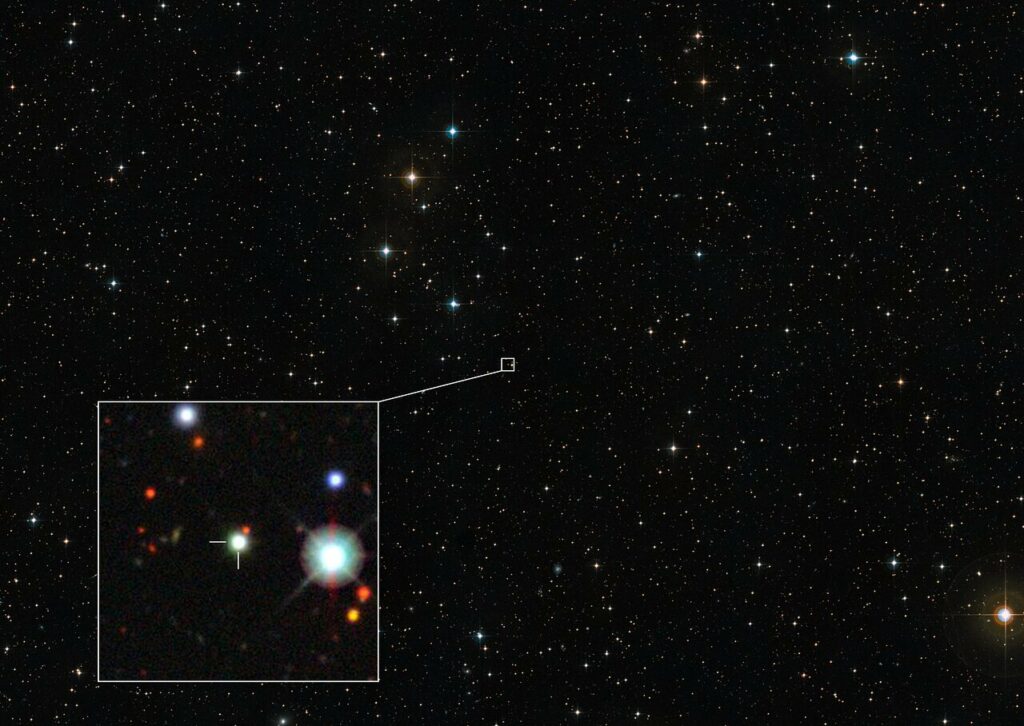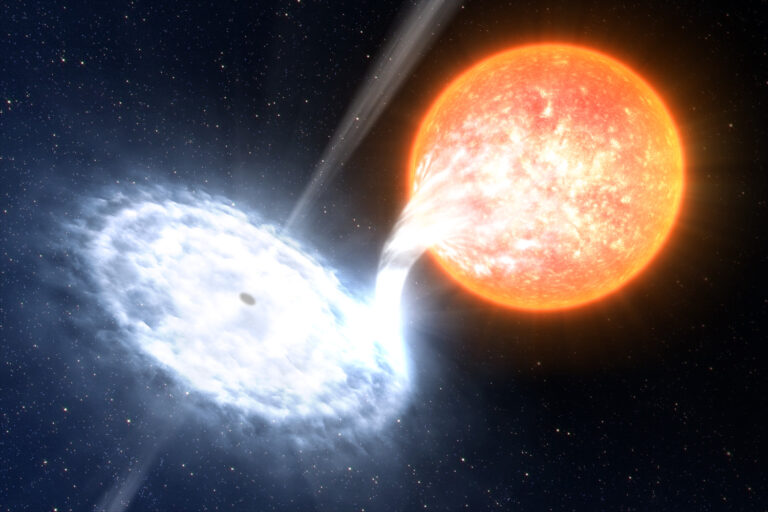Black Hole with 17 Billion Solar Mass Devours One Sun Daily
Scientists have utilized the European Southern Observatory’s (ESO) Very Large Telescope (VLT) to examine a remarkable quasar and have determined it to be not only the most radiant in its category but also the most luminous entity ever observed. Quasars are the luminous cores of galaxies located far away, powered by supermassive black holes.
The black hole within this extraordinary quasar is rapidly increasing its mass at a rate equivalent to one solar mass per day, making it the fastest-growing black hole on record.
Quasars are fueled by the matter gathered by the black holes in their vicinity, emitting enormous amounts of light in the process. As a result, quasars are among the brightest objects visible in our sky, even when they are located at significant distances from Earth. Typically, the most luminous quasars indicate the presence of the fastest-growing supermassive black holes.
“We have discovered the fastest-growing black hole known to us. With a mass equivalent to 17 billion suns, it consumes slightly more than one solar mass every day. This makes it the most luminous object in the observable universe,” said Christian Wolf, an astronomer at the Australian National University (ANU) and the lead author of the study published in Nature Astronomy. The quasar, named J0529-4351, is located so far away from Earth that its light has taken over 12 billion years to reach us.
The black hole in question attracts matter towards it, creating a disk that emits an immense amount of energy. This energy causes J0529-4351 to shine over 500 trillion times brighter than the sun. Samuel Lai, an ANU Ph.D. student and co-author, described the accretion disk as a hot disk that spans seven light-years, making it possibly the largest accretion disk known to exist. To put this into perspective, seven light-years is equivalent to about 15,000 times the distance between the sun and Neptune’s orbit.
Interestingly, this remarkable quasar went unnoticed until recently. Christopher Onken, an astronomer at ANU and co-author, expressed surprise that it remained undetected despite the existence of a million less remarkable quasars already known. He mentioned that the object had actually appeared in images from the ESO Schmidt Southern Sky Survey dating back to 1980, but its classification as a quasar was only made decades later.
Detecting quasars requires precise observational data that covers vast areas of the sky. The resulting datasets are so extensive that researchers often turn to machine learning models to distinguish quasars from other celestial objects.
However, these models rely on existing data, which means they tend to categorize potential candidates based on objects that have already been identified. If a new quasar is more luminous than any previously observed, the program may mistakenly dismiss it and classify it as a star that is relatively close to Earth.
Initially, the European Space Agency’s Gaia satellite misidentified J0529-4351 as a star instead of a quasar due to its brightness. However, last year, researchers confirmed its true nature as a distant quasar through observations from the ANU 2.3-meter telescope at the Siding Spring Observatory in Australia.
To further study this remarkable quasar, a larger telescope and more precise instrument measurements were required. The X-shooter spectrograph on ESO’s VLT in the Chilean Atacama Desert provided crucial data for this purpose.
Additionally, the most rapidly expanding black hole ever observed will be an excellent target for the GRAVITY+ upgrade on ESO’s VLT Interferometer (VLTI). This upgrade is specifically designed to accurately measure the mass of black holes, even those located far from Earth. Furthermore, the construction of ESO’s Extremely Large Telescope (ELT), a 39-meter telescope in the Chilean Atacama Desert, will greatly enhance the identification and characterization of such elusive objects.

Studying and investigating faraway supermassive black holes has the potential to unlock the secrets of the early universe, shedding light on how they were created and how they evolved alongside their galaxies. Yet, Wolf’s motivation goes beyond mere scientific curiosity. “On a personal level, I find great pleasure in this endeavor,” he stated. “Every day, for a few minutes, I am able to immerse myself in the excitement of a treasure hunt, applying all the knowledge I have acquired over time.”
Do not forget to share your opinion with us to provide you with the best posts !




0 Comments